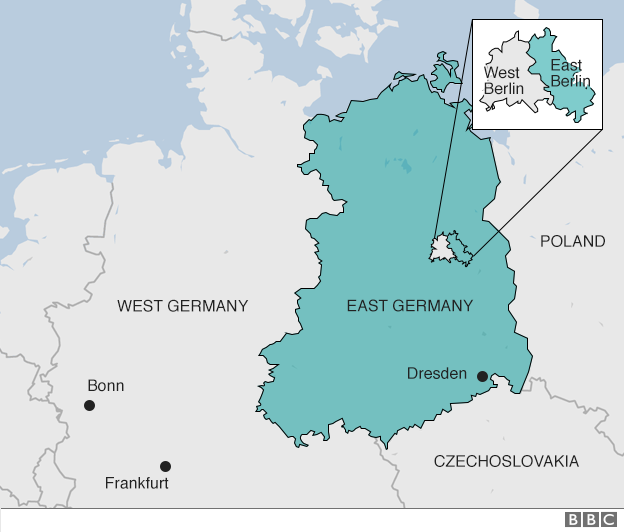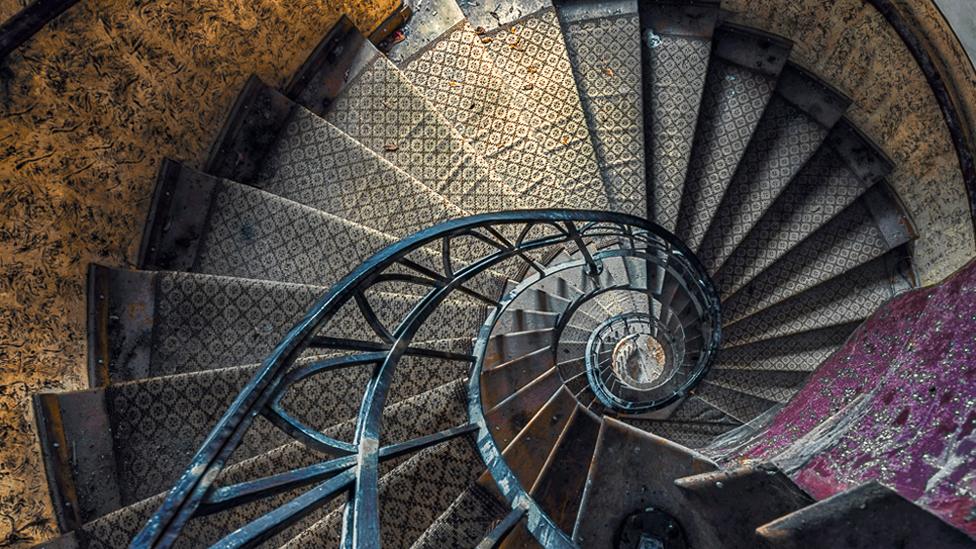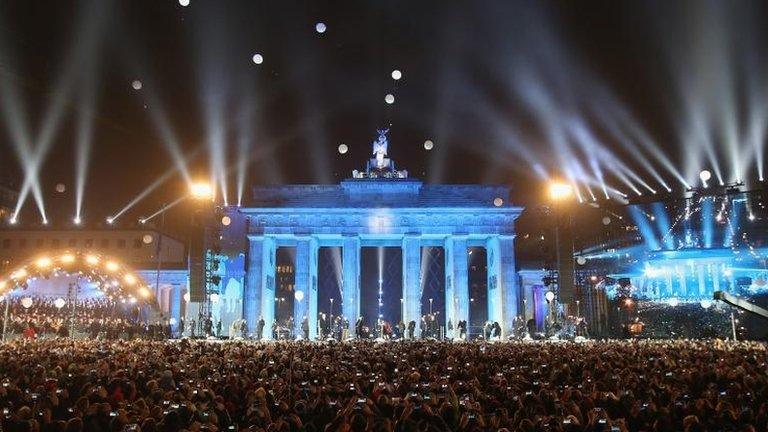East German border claimed 327 lives, says Berlin study
- Published

The Berlin Wall and no man's land in 1984 - the Cold War at its most intense
A new German study has put at 327 the number of people killed at the East German border during the Cold War.
Most were civilians trying to flee to the West from communist East Germany.
The 327 includes 262 who died at the Berlin Wall, and 24 East German border guards who were shot while on duty.
The study, external was done by a team at the Free University of Berlin. About half of those who died were aged 18-25. The youngest was a baby who suffocated in the boot of a car in 1977.
Many of the victims were shot by East German guards, drowned trying to swim to the West or set off anti-personnel mines.
About 10% of those who died were women. Many of the 327 were young manual workers or farmers.

Daring escapes

East Germany erected the Wall overnight in 1961 and it totally surrounded West Berlin
In 1979 two East German families - the Wetzels and Strelzyks, four adults and four children in total - flew from Thüringia to Bavaria using a secretly made hot-air balloon
In 1986 East Berliners Karsten Klünder and Dirk Deckert reached Danish waters in the Baltic after setting off on surfboards with home-made sails
In 1988 the Kostbades - a family of four - paddled a tiny rubber dinghy 111km (69 miles) across the Baltic to the West
The Bethke brothers all fled to the West in novel ways: Ingo got there by crossing a river on an air mattress with a friend; Holger used a bow and arrow to fire a cable across the Berlin Wall, and zip-wired to the West; and in May 1989 Ingo and Holger flew two ultra-light planes over the Wall, picked up brother Egbert, and flew back to the West
In 1964 West Germans risked their lives by smuggling 57 East Germans to the West via a tunnel they had dug under the Wall - later dubbed "Tunnel 57"


The heavily guarded border stretched for about 1,400km, from the Baltic Sea to Czechoslovakia. It had mines, tank traps, barbed wire and watch-towers.
East Germany - officially called the GDR - fortified it to halt an exodus of people from the Soviet-controlled zone to West Germany.
Expensive project
The researchers spent nearly five years poring over GDR archives - mainly those of the border guards and Stasi secret police.
They also conducted many interviews, investigating 1,492 cases related to the old border. German state governments contributed to the project, which cost €642,000 (£555,500; $718,620).
The 327 deaths occurred in the period 1949 to 1989 - the year that the Berlin Wall was knocked down, as the GDR collapsed.
The oldest person to die at the border was an 81-year-old farmer who stepped into a minefield by mistake in 1967. A mine blew both his legs off and he bled to death over three hours, watched by a GDR military doctor who did not dare rescue him, the study said.
The research did not include the estimated 200 deaths of people fleeing across the Baltic Sea.
Nor did it include those who died trying to get across the borders of other communist bloc states - estimated in the range of 30 to 200.
Of the 24 East German border guards killed, nine were shot by people fleeing East Germany, eight in "friendly fire" incidents, three by civilians, three by US patrols and one by a West German border guard.
The study also documented 44 East German border guards taking their own life.
Some experts have questioned these figures. They say the circumstances - for example suicides - may not have been linked to the border itself.
- Published11 November 2015

- Published27 March 2015

- Published6 November 2014

- Published9 November 2014

- Published14 September 2012
